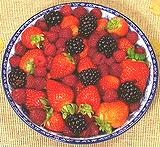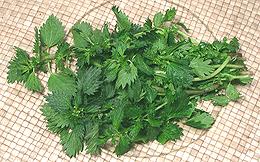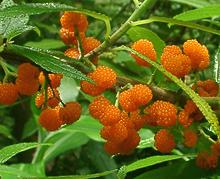

Magnolias

Eudicots

Search
Clovegarden
SAFARI
Users
|
|
|
Rose Family
- [Rosaceae]
This family contains at least 2830 species in at least 95 genera
and abounds in familiar (and some unfamiliar) edible species. It is
so large it has been divided into several Subfamilies and those into
Tribes and Subtribes. We arranged those that are of culinary interest
in a simplified format to avoid excessive brain strain.
|
Pome Fruits -
[Tribe Maleae of Subfamily Amygdaloideae]

This tribe is very important for large fruits eaten raw or cooked -
Apples, Pears, Loquats, Quinces and others. The characteristic of this
tribe is fruit where a swollen flower base has wrapped its thick
edible flesh completely around the actual fruit and its seeds.
The Pome Fruits have their own
page.
Stone Fruits -
[Tribe Amygdaleae of Subfamily Amygdaloideae]

Almost as important as the Pome Fruits, this tribe produces peaches,
plums and cherries. Here the thick edible flesh is the middle layer
of the actual fruit. The swollen flower base of the pome fruit is
completely missing. The
Stone Fruits have their own page.
Berries, Herbs, Roots & Flowers
- [Subfamily Rosoideae]

This subfamily contains two genera of "berries" of culinary note,
including blackberries, raspberries and strawberries, plus the the
actual Roses, and some herbs. In these berries, the swollen flower base is
turned inside out, and is covered by a myriad of fruits similar in
structure to stone fruits, but tiny with very tiny stones. The fruit
of actual Roses is more like the pome fruits. The
Berries, Herbs & Flowers have
their own page.
|
Buckthron Family
- [Rhamnaceae]

The Buckthorn family (Rhamnaceae) is a modest size family of mostly
thorny flowering plants found in temperate and subtropical climates
worldwide. The family provides only a few food items, but was once
important for charcoal used to make gunpowder. This family has it's
own Buckthorns Page.
Mulberry Family
- [Moraceae]

The mulberry family is found worldwide in
tropical, subtropical and temperate regions. American mulberries are but
3/4 inch long, but the mulberry family accounts also for the largest tree
fruit in the world, exceeding 80 pounds and three feet long. This family
has it's own Mulberries Page.
Oleaster Family
- [Elaeagnaceae]

Oleasters are a small family with only three genera. They mostly inhabit
northern temperate climates, but some species extend through Southeast
Asia to Australia. In Europe and Asia they have been used as minor food
items and medicinals since prehistoric times. This family
has it's own Oleaster Page.
Hemp Family
- [Cannabaceae]

The Hemp family (Cannabaceae) is a small family of herbs, vines, shrubs
and small trees, consisting of only about 9 Genera in all. While hemp is
a very useful industrial, culinary and medicinal plant, its use in the
United States has been greatly hindered by the misguided and totally
failed "war on drugs", which has succeeded only in transferring billions
of dollars to criminals - and providing many thousands of lifelong but
worthless careers for government employees. This family
has it's own Hemp Page.
Nettle Family
- [Urticaceae]
This family contains about 2600 species in 54 to 79 genera (depending
on which expert you consult), but is not big on edibles. A number of
species are locally important for fiber.
|
Nettles -
[Shishnu (Nepal); Urtica dioica subsp. gracilis
(American) | Urtica dioica subsp.
dioica (European)]

The Stinging Nettle is the most common culinary member of the
Urticaceae family, though others are also eaten locally.
This highly nutritious plant was important to the Native
population of North America, but it has fallen out of use here except
as an ingredient in some herbal teas and hair treatment formulas.
Nettles are still eaten frequently in Ireland, where they were one
of the major reasons the English were not able to starve all
the Irish to death during the potato famine. They contain more usable
protein than just about any other leafy green, in general by a wide
margin. Nettles are also eaten in parts of Northern and Eastern
Europe, as well as in Italy - and in Nepal and the neighboring Kumaon
division of India. They also have medicinal uses, particularly in
treatment of arthritis.
Details and Cooking.
Yanagi-ichigo -
[Yanagi-ichigo (Japan); shui ma (China); Debregeasia orientalis]

This shrub, which can grow to 13 feet high, is native to Bhutan,
northeastern India, China, Taiwan and Japan. The fruit is edible and
can be eaten fresh or used to make jams or wine. The bark of the
plant is used for fiber.
Photo by Loasa contributed to the Public Domain.
|
|
 Rosales - Order
Rosales - Order Rosales - Order
Rosales - Order